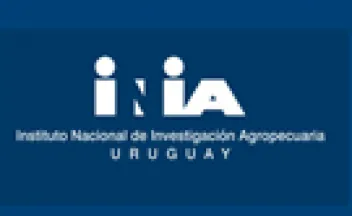Instituto Nacional de Investigación Agropecuaria
Current understanding of the Diaporthe/Phomopsis complex causing soybean stem canker: A focus on molecular aspects of the interaction.

Soybean stem canker (SSC) is an important disease caused by different Diaporthe spp., including D. aspalathi, D. caulivora and D. longicolla, that leads to soybean (Glycine max) yield losses around the world. Most studies have been focused on the morphological characterization and molecular identification of Diaporthe spp. present in SSC lesions. Several soybean resistance loci to Diaporthe spp. causing SSC have been identified, although the molecular identities of the resistance genes are at present unknown.
Current understanding of the Diaporthe/Phomopsis complex causing soybean stem canker:A focus on molecular aspects of the interaction.

Soybean stem canker (SSC) is an important disease caused by different Diaporthe spp., including D. aspalathi, D. caulivora and D. longicolla, that leads to soybean (Glycine max) yield losses around the world. Most studies have been focused on the morphological characterization and molecular identification of Diaporthe spp. present in SSC lesions. Several soybean resistance loci to Diaporthe spp. causing SSC have been identified, although the molecular identities of the resistance genes are at present unknown.
Cystic endometrial hyperplasia-pyometra syndrome impairs the preantral follicle reserve in domestic bitches (Canis familiaris).

Cystic endometrial hyperplasia (CEH)-pyometra syndrome is the most common uterine pathological condition reported in breeding bitches, however, their described effects on fertility are limited to uterine disorders and conception rates. As the preantral follicle population represents the available reserve of gametes recruited during the lifespan, the aim of this study was to evaluate the effects of CEH-pyometra syndrome on the:(i) preantral follicle morphology, (ii) developing follicle rates, and (iii) preantral follicle and stromal cell densities.
Perception of brazilian agricultural sciences students on animal welfare: a profile-based approach.

The agricultural professionals are ethically obligated to provide good care for the animals under their care. We analysed Brazilian agricultural science students? profiles based on their perceptions of animal welfare (AW). The survey included 239 students from agronomy, animal science, and veterinary courses in 44 universities. A factor analysis and a cluster analysis identified four students? profiles. ?The farm animal stewards?
Perception of brazilian agricultural sciences students on animal welfare:a profile-based approach.

The agricultural professionals are ethically obligated to provide good care for the animals under their care. We analysed Brazilian agricultural science students? profiles based on their perceptions of animal welfare (AW). The survey included 239 students from agronomy, animal science, and veterinary courses in 44 universities. A factor analysis and a cluster analysis identified four students? profiles. ?The farm animal stewards?
Regenerative livestock farming in Uruguay.

Regenerative livestock farming as a productive activity derives from the concept of regenerative agriculture. ----- SECTIONS:1. What is regenerative livestock farming?. -- 2. Scientific evidence for the improvement of environmental indicators. -- 3. Background of the proposal. -- 4. INIA's proposal. -- 5. Scaling up the proposal and INIA's role. -- 6. Acknowledgements. -- 7. References.
Impact of adding tannins or medium-chain fatty acids in a dairy cow diet on variables of in vitro fermentation using a rumen simulation technique (RUSITEC) system.

This work aimed to evaluate the effect of including 2 functional feed ingredients in a diet with a high proportion of pasture silage on in vitro ruminal fermentation, nutrient disappearances, and ruminal microbiomes.
Identification and functional analysis of Cochliomyia hominivorax U6 gene promoters.

The New World screwworm, Cochliomyia hominivorax, is an obligate parasite, which is a major pest of livestock. While the sterile insect technique was used very successfully to eradicate C. hominivorax from North and Central America, more cost-effective genetic methods will likely be needed in South America. The recent development of CRISPR/Cas9-based genetic approaches, such as homing gene drive, could provide a very efficient means for the suppression of C. hominivorax populations. One component of a drive system is the guide RNA(s) driven by a U6 gene promoter.
Paginación
- Página anterior
- Página 57
- Siguiente página
